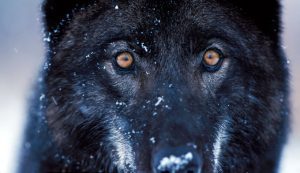 You can use your grazing permit as collateral for a loan? This needs to be Banned!!
You can use your grazing permit as collateral for a loan? This needs to be Banned!!
10 things to know about grazing on public lands
- Grazing occurs on about 235 million acres of public land.
That’s about 367,000 square miles – more land than that of California, Oregon and Washington combined. The U.S. Bureau of Land Management is in charge of about 155 million acres of the grazing land, according to a2014 BLM fact sheet. Together, the BLM and the U.S. Forest Service manage about 98 percent of the country’s grazing land.
- Grazing is massively subsidized. by you guesses it Taxpayers!
OK, it’s not an official subsidy, but what do you call it when the government only charges you $2.11 to graze your cow and her calf each month when the private market rate is more like $18?
- Grazing IS really bad for the environment.
Sustainable grazing definitely exists. But overgrazing and many conventional grazing practices pose risks to the environment
- Water: Cow manure can wash off into streams. The phosphorus in the manure can cause algae blooms, which in turn reduce oxygen and kill fish. Plus, the microorganisms in manure can make people sick. Giardia, anyone?
- Soil: Cows trampling over the same pasture month after month erodes the soil. That soil washes away, starting with the nutrient-rich topsoil first. Now you’ve got streams filled with sediment and fields with soil that can’t sustain plant life.
- Wildlife: Competition for water and food has pushed rangelands to the edge. Even when ranchers use sustainable practices, drought and changes in vegetation due to climate change mean wildlife and livestock can’t coexist anymore in some places. Just look at the sage grouse controversy.Livestock grazing in the Palomar Mountain area of San Diego County, Calif., has allowed the invasion of non-native weeds and contributed to the decline of insects and reptiles.
- Grazing fees cover only a small fraction of the cost of managing public land grazing programs.
The BLM and the Forest Service dropped the price of grazing fees by 40 percent from 1980 to 2004. As that fee dropped, private ranchers’ grazing fees rose by nearly 80 percent, according to the Government Accountability Office. By 2004, the GAO found that public grazing fees were covering less than a sixth of the federal government’s cost of managing that land. Ultimately, the report concluded, Congress needed to decide whether to base grazing fees on recouping costs, fair market value, or something else entirely, such as supporting the ranching industry. If the goal were to break even, the BLM would need to raise fees from the 2004 rate of $1.43 to $7.64, the report estimated. A decade later, grazing fees areholding steady at $1.35.
- Cows grazing on federal land account for only about 3 percent of our national beef supply.
- Grazing in national forests is allowed.
The Forest Service manages about 75 million acres of grazing land, including in national forests.
- Grazing on National Park Service land is also allowed.
National seashores and national recreation areas are often open to grazing. At Point Reyes National Seashore north of San Francisco, for example, tensions are rising between organic dairy cattle ranchers and advocates of the tule elk, found only in California.
- You can use your grazing permit as collateral for a loan.
Maintaining your permit to graze on public lands is such a sure bet that many banks accept it as a form of collateral. Permits are granted in 10-year intervals, and as long as the rancher stays in the government’s good graces, renewal is pretty much guaranteed. Permits are often passed down from generation to generation. The IRS even assigns them monetary value, based on market rates, for tax purposes.
- Our public rangeland isn’t in great health.
Nearly a third of rangeland failed to meet BLM standards due to the impacts of livestock, according to a map by Public Employees for Environmental Responsibility using BLM data. The BLM disputes the accuracy of the map.
- Regulatory capture plays a big role in how grazing policy works.
“In spite of the impressive amount of on-the-ground data showing the poor condition of the land, BLM officials have continued the time-honored system of deferring to the ranching industry,” wrote Charles Wilkinson in “Crossing the Next Meridian.”
On one side, you have the cattle industry. It has had more than 100 years to develop its legislative power. These are people fighting for their livelihoods and way of life. On the other, you have conservationists and outdoorsmen, who are considerably less organized and have less time to devote. Plus, the actual on-the-ground government regulators live in the same communities as the people they regulate.
“They’re the ones who have to meet the ranchers on the street and in the grocery market. It’s not pretty when there’s real conflict,” Wilkinson told Reveal. “That’s a pressure that helps the current system stay roughly in place.”
Source: Weak oversight of public grazing land, thanks to ‘lord of yesterday’ | Reveal
